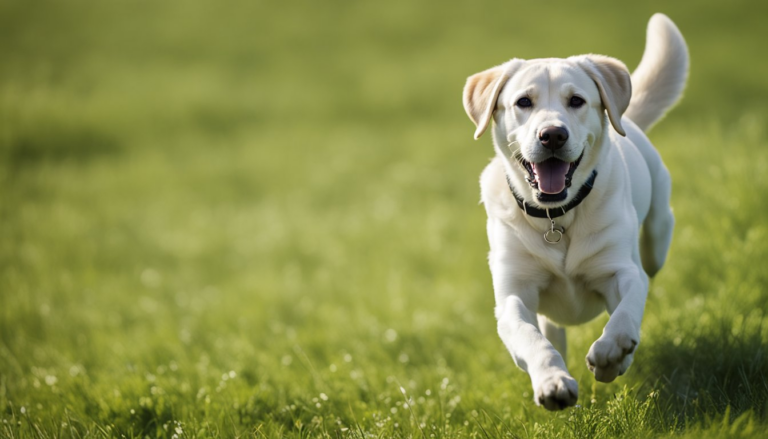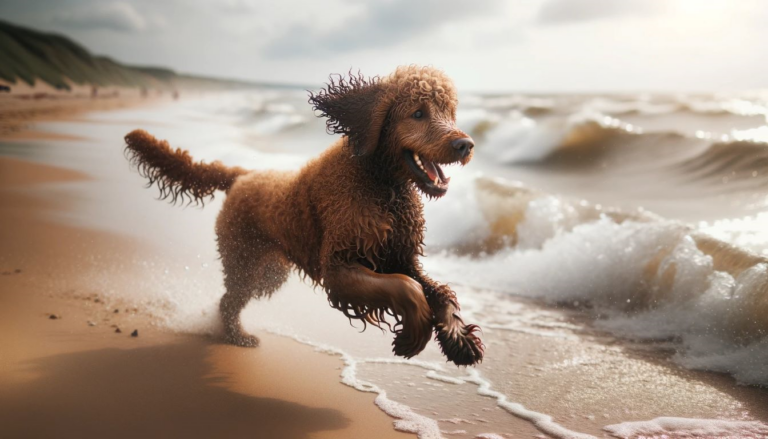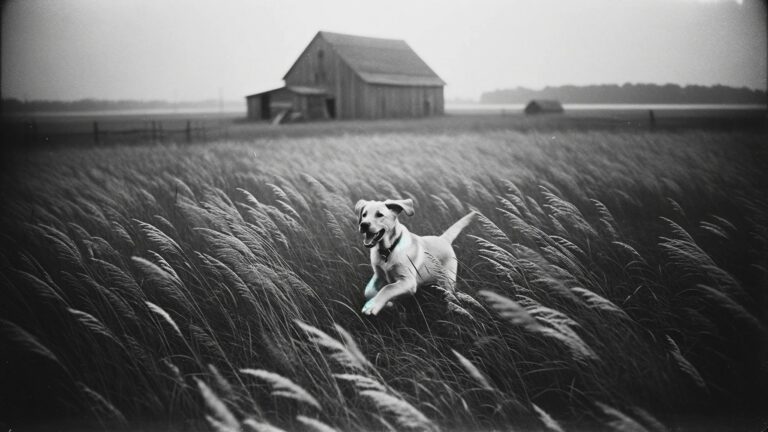Labrador Retriever Breed Guide: Essential Tips & Insights
The Labrador Retriever is a popular and versatile breed known for its friendly and gentle nature. Known as “Lab” for short, these dogs make excellent companions for families, as well as reliable service dogs. Labs are highly intelligent, easy to train, and adapt well to various lifestyles, making them a top choice for many dog lovers.
Originally bred in Newfoundland, Labrador Retrievers served as working dogs for fishermen, helping them haul in nets and retrieve fish. Today, Labradors excel as guide dogs, therapy dogs, search and rescue dogs, and even law enforcement canines.
Labrador Retrievers are not only diverse in their skill set but also in their coat colors and overall appearance. Their physical characteristics and temperament make them an ideal breed for various roles, including family pets, sporting dogs, and working dogs.
Key Takeaways
- Labrador Retrievers are versatile, friendly, and intelligent, making them popular family pets and service dogs.
- They have a rich history as working dogs, aiding fishermen and serving in various roles such as guide dogs and therapy dogs.
- Labs come in different coat colors and excel as both family pets and working dogs, adapting well to different living conditions and tasks.
Breed History and Origin of the Labrador Retriever
The Labrador Retriever, affectionately known as the “Lab,” has a rich history that traces back to the early 19th century. Originally from Newfoundland, Canada, these dogs were bred as fisherman’s assistants and were responsible for helping retrieve fish from nets. They were then brought to England, where their modern breed characteristics were further developed and refined.
Labs gained increasing popularity in England during the 20th century due to their exceptional working abilities and friendly nature. They were used in various roles, such as hunting, tracking, and even assisting with search and rescue missions. The breed’s incredible versatility and adaptability eventually led to its widespread popularity in many other countries, including the United States.
Today, the Labrador Retriever is regarded as one of the most popular breeds worldwide, consistently ranking at the top of the American Kennel Club’s list of most-loved dogs. Their popularity can be attributed not only to their friendly and gentle temperament but also to their remarkable intelligence and ability to adapt to various tasks and environments.
The Lab’s role in work and service has significantly evolved over time, particularly as guide dogs for the visually impaired. Labrador Retrievers have become the go-to breed for this important service role due to their docile nature, intelligence, and excellent trainability. In fact, many guide dog organizations specifically breed and train Labs for this purpose.
In popular culture, Labrador Retrievers have made numerous appearances in movies, television shows, and advertisements, further cementing their status as a beloved breed. These appearances often showcase the Lab’s friendly demeanor and loyal companionship, illustrating why they have earned their place as a favored family pet in many households.
Overall, the Labrador Retriever’s history and origin highlight a breed that has consistently demonstrated its versatility and adaptability. From their early beginnings as fisherman’s assistants to their current roles in work, service, and companionship, Labs have remained steadfast in their popularity and significance in the world of dogs.
Labrador Retriever Breed Variations
American vs. British Labradors
There are two main variations within the Labrador Retriever breed: the American Labrador and the British Labrador. American Labradors, also known as Field Labradors, tend to have a slimmer, more athletic build. They are often bred for hunting and fieldwork, which is reflected in their more energetic and tenacious nature.
In contrast, British Labradors, also called Show or English Labradors, possess a stockier and more muscular build. They are typically calmer and more gentle, making them ideal family pets and therapy dogs.
Both types of Labradors come in three primary colors: black, yellow, and chocolate. The color of a Labrador does not significantly affect its temperament or abilities but may be preferred by potential owners for purely aesthetic reasons.
Overall, both American and British Labradors are known for their intelligence, friendliness, and adaptability to various roles, including search and rescue, service dog work, and family pets.
Notable Sub-breeds or Variations
In addition to the main American and British variations of Labrador Retrievers, there are some lesser-known types that are worth mentioning:
- Bench-Bred Labrador: A sub-type of the British Labrador, these dogs are specifically bred for conformation shows. They have a more refined appearance, adhering closely to breed standards.
- Silver Labrador: A rare variation of the breed, silver Labradors possess a unique silver or gray coat color due to a dilute gene. Despite being recognized by some kennel clubs, there is controversy surrounding their acceptance within the breed.
- Mixed-Breed Labradors: Labrador Retrievers are commonly bred with other breeds to create unique mixed breeds, such as the Labradoodle (Labrador and Poodle mix) or the Labrashepherd (Labrador and German Shepherd mix). Mixed-breed Labradors typically inherit some of the desirable traits of both parent breeds; however, their appearance and temperament can vary significantly.
Understanding the various types and sub-breeds of Labrador Retrievers can help potential owners make informed decisions about which variation best suits their lifestyle and preferences. As with any dog breed, always research breed characteristics, consult with experienced breeders, and consider individual dog temperaments when choosing the right Labrador Retriever.
Labrador Retriever Physical Characteristics

Average Size and Weight
Labrador Retrievers are a medium to large-sized breed. Males generally weigh between 65-80 pounds (29-36 kg), while females are slightly smaller, weighing between 55-70 pounds (25-32 kg). The height of male Labradors ranges from 22.5-24.5 inches (57-62 cm), whereas female Labrador Retrievers typically stand around 21.5-23.5 inches (54-60 cm) tall.
| Gender | Weight Range (lbs) | Height Range (inches) |
| Male | 65-80 | 22.5-24.5 |
| Female | 55-70 | 21.5-23.5 |
Coat Types and Colors
Labrador Retrievers have a distinctive double coat, which helps to keep them warm and dry. The coat is comprised of a soft, dense undercoat that provides insulation and a water-resistant topcoat that helps to repel water. Labradors can have different coat textures, ranging from straight to slightly wavy.
The standard coat colors for Labrador Retrievers are black, yellow, and chocolate. However, rare colors such as silver, charcoal, and fox red can also appear in some Labradors. These rare colors are the result of a dilution gene found in the breed.
Labrador Retriever Lifespan
A healthy Labrador Retriever can live up to 10-12 years. Their lifespan, however, is dependent on factors such as genetics, diet, exercise, and general care. Regular check-ups from the veterinarian and providing them a balanced diet can help increase their life expectancy.
Distinctive Features
Labrador Retrievers are known for their friendly, outgoing, and energetic personalities. They have powerful, muscular bodies with a broad head, expressive eyes, and drop ears. One of their most recognizable features is their otter-like tail, which is covered in thick fur, making it powerful and helps to navigate water effortlessly.
Labrador Retrievers are not only excellent family companion dogs but are also admired for their versatility as working dogs. They excel at search and rescue, therapy and service work, and as skilled assistance dogs. All these characteristics contribute to their popularity as one of the favorite dog breeds around the world.
Labrador Retriever Temperament and Personality
Typical Behaviors and Traits
Labrador Retrievers are known for their friendly and intelligent nature, making them one of the most popular dog breeds in the world. They possess a good temperament, which often translates to a loyal and loving companion. These dogs are typically outgoing, social, and adaptable to various environments.
In general, Labrador Retrievers are highly trainable dogs with a strong eagerness to please their owners. Due to their intelligent and affectionate personalities, they make excellent family pets and are commonly used as service dogs, therapy dogs, and search-and-rescue dogs.
Interaction with Children and Other Pets
Labrador Retrievers are often considered an ideal breed for families with children due to their gentle and patient demeanor. They tend to bond easily with kids and enjoy playing interactive games. It is important that Labrador Retrievers are socialized from a young age, which helps them interact confidently with other pets, especially dogs.
When properly socialized, Labradors typically get along well with other household animals, such as cats and smaller pets. However, it is always a good idea to supervise interactions between a Labrador Retriever and other pets, especially during the initial introduction period, to ensure harmony and prevent any potential issues.
Energy Levels

Labrador Retrievers are an energetic and athletic breed that require regular exercise and mental stimulation. They love to be involved in activities like swimming, fetching, and going for long walks or runs. A Labrador Retriever’s energy levels tend to remain high throughout their life, which makes it necessary for owners to provide ample opportunities for physical activities to maintain a healthy and happy dog.
It is also essential to engage a Labrador’s mind with activities like puzzle toys, obedience training, and scent work to prevent boredom and reduce the possibility of developing destructive behaviors.
Trainability
Labrador Retrievers are highly trainable dogs, mainly due to their intelligence, motivation to please, and adaptability. Their training should start at a young age to ensure proper socialization and development of desired behaviors. Positive reinforcement methods, such as praise, treats, and toys, usually work best for Labrador Retrievers during training.
Consistent and patient training is key when working with a Labrador Retriever, as they can sometimes become distracted or stubborn. However, with proper guidance and support from their owner, Labrador Retrievers can excel in various activities such as obedience, agility, and even advanced roles like therapy and service work.
Health and Lifespan of Labrador Retrievers

Common Health Issues in the Breed
Labrador Retrievers, like any other breed, can face some common health issues. These can include hip dysplasia, elbow dysplasia, obesity, arthritis, progressive retinal atrophy, and epilepsy. Hip and elbow dysplasia are joint conditions that may lead to discomfort and mobility problems in the long term. Obesity is a prevalent issue in Labradors, as their appetites can lead to overeating, increasing the risks of various ailments. Progressive retinal atrophy can result in vision impairment, while epilepsy is a neurological disorder that may cause seizures in affected dogs.
Average Lifespan
Labrador Retrievers typically have a median longevity of around 12 years. Keep in mind that proper care, diet, and exercise can help your Labrador live a longer, healthier life. The lifespan of a Labrador Retriever may vary depending on genetics and environmental factors.
Tips for Maintaining Good Health
To ensure the good health and well-being of your Labrador Retriever, consider the following tips:
- Regular exercise: Labradors are energetic dogs and need daily walks, play sessions, or other physical activity to stay healthy and avoid obesity.
- Balanced diet: Provide your Labrador a high-quality, balanced diet to maintain the appropriate weight. Keep track of their calorie intake and consult a veterinarian if needed.
- Hip and elbow screening: Regular check-ups for hip and elbow dysplasia can prevent or mitigate joint problems as the dog ages. Early detection will lead to better management and care.
- Eye examinations: Regular visits to the veterinarian for eye check-ups can help identify and treat progressive retinal atrophy at the earliest stage possible.
- Weight monitoring: Regularly monitor your Labrador’s weight to prevent the risk of obesity, which can contribute to various health issues, such as arthritis and elbow dysplasia.
- Preventative care: Provide routine vaccinations, flea and tick prevention, and dental care to maintain overall health and well-being.
By following these guidelines, you can help your Labrador Retriever maintain good health throughout their life.
Exercise Needs
Daily Exercise Requirements
Labrador Retrievers are a high-energy breed that requires regular exercise to maintain their health and happiness. They are an active dog, which means they need daily exercise to keep them physically fit and mentally healthy. It’s recommended that Labs get at least 30 minutes to an hour of physical activity per day.
- Walks: A brisk walk or a jog for around 30 minutes to an hour is ideal for a Lab.
- Fetch: Playing fetch with a ball or a frisbee is a great way to provide the physical exercise they need.
- Swimming: Labs love to swim and it’s an excellent exercise for them. It provides a low-impact workout that is gentle on their joints while still building muscles.
Suitable Activities and Games
To keep your Labrador’s energy levels in check, consider incorporating some of the following activities and games into their exercise routine:
- Agility: Labs excel at agility, a sport that involves running through obstacle courses and jumping over hurdles. This provides both mental and physical stimulation.
- Hiking: Taking your Lab on a hike is an excellent way to provide exercise and mental stimulation. They enjoy exploring new environments and smelling different scents.
- Tug-of-war: A game of tug-of-war with a sturdy rope toy is an excellent way to engage their muscles and burn off some energy.
Mental Stimulation
In addition to physical exercise, Labrador Retrievers need mental stimulation to stay happy and well-adjusted. Here are some options for engaging your Lab’s mind:
- Puzzle toys: Interactive puzzle toys challenge your dog to work for their treats, which helps to keep them mentally stimulated.
- Training sessions: Obedience training or learning new tricks takes focus and concentration, which provides mental stimulation for your Lab.
- Hide-and-seek: Playing hide-and-seek with treats or toys can be a fun way to challenge your Labrador’s problem-solving skills.
By providing your Labrador Retriever with the necessary exercise and mental stimulation, you can ensure they remain healthy, happy, and well-adjusted members of your family.
Training and Behavior
Basic Training Techniques
Labrador Retrievers are known for their intelligence and willingness to learn, making them a popular choice for service roles, such as guide dogs. Their natural aptitude for training can be enhanced with clear and consistent communication, positive reinforcement, and patience. Keep sessions short and fun to retain their attention, and gradually build on their skills.
- Use positive reinforcement by offering praise, treats, or toys as rewards for successful learning.
- Maintain consistency in the commands and actions you use to prevent confusion.
- Break down tasks into smaller, more manageable steps for easier learning.
- Train in a variety of environments to encourage adaptability.
Importance of Early Socialization
Socialization is necessary for the development of a well-rounded Labrador Retriever. Experts recommend introducing your Labrador to a range of people, places, and experiences from an early age. This exposure helps your puppy grow into a confident and well-adjusted adult. Encourage positive interactions with other dogs, children, and adults during their formative period to develop a solid foundation for future training and social skills.
Activities for Mental and Physical Stimulation
Labrador Retrievers are highly energetic and require consistent mental and physical stimulation to maintain their wellbeing. Engaging them in various activities can make the training process more enjoyable and effective. Here are some suggestions:
- Obedience training: Enhance your Labrador’s mental stimulation by teaching them basic and advanced commands such as sit, stay, and recall. Practicing obedience regularly can strengthen your bond and improve their focus and responsiveness.
- Tricks and advanced commands: Challenge your Labrador’s intelligence by teaching them tricks like roll over, play dead, or fetch objects by name. These activities promote cognitive growth and keep their minds sharp.
- Fetch and retrieve games: Labradors have a strong natural instinct to retrieve, which can be harnessed with interactive games. Use toys, balls, or frisbees to encourage them to fetch and bring back items, reinforcing their retrieving skills in the process.
- Agility training: Setting up an agility course with jumps, tunnels, and weave poles can provide both mental and physical challenges for your Labrador Retriever. This activity helps improve their coordination, speed, and overall fitness.
By incorporating these training techniques and activities, your Labrador Retriever will develop into an intelligent, well-behaved, and active companion. Always remember the importance of patience and consistency in the process to support their overall learning and growth.
Feeding and Nutrition for Labrador Retrievers
Typical Diet Requirements
Labrador Retrievers are known for their healthy appetite and high energy levels. As a result, they require a balanced and nutritious diet to support their active lifestyle. Their diet should consist of high-quality dog food that includes a variety of protein sources such as chicken, beef, fish, or lamb.
It is also essential to provide carbohydrates in the form of grains or vegetables, as well as healthy fats, vitamins, and minerals. Feeding a Labrador Retriever with a nutritious and balanced diet can help maintain their ideal body weight and reduce the risk of obesity, which is a common issue among this breed1.
Feeding Schedule and Portion Sizes
| Age Group | Feeding Frequency | Notes |
| Puppies (<6 months) | 3-4 times a day | Transition to adult feeding schedule as they grow. |
| Adults | 2 times a day | Monitor portion sizes based on activity level, weight, and health. Consult with a vet. |
For a Labrador Retriever, it is highly advisable to establish a consistent feeding schedule2. Adhering to a regular feeding schedule can help regulate their appetite and prevent overeating.
It’s essential to determine the appropriate portion sizes for your Labrador, taking into account their age, weight, activity level, and overall health. Dog food packages usually provide general feeding guidelines, but consulting your veterinarian to determine the ideal portion size specific to your dog’s needs might be beneficial. Monitoring your Labrador’s body condition and adjusting the portion sizes accordingly can help maintain their ideal body weight and prevent obesity-related health issues.
Special Dietary Needs and Considerations
Some Labrador Retrievers may have specific dietary needs or food sensitivities. In such cases, offering a limited ingredient diet or a hypoallergenic dog food might be necessary. Also, it is necessary to be aware of certain toxic foods for dogs, such as chocolate, grapes, raisins, onions, and garlic, and keep these foods out of their reach.
As Labrador Retrievers are prone to obesity, regular exercise combined with an appropriate diet and portion control should be emphasized. Feeding them smaller meals throughout the day and avoiding free-choice feeding helps regulate their food intake. Additionally, steering clear of table scraps or excessive treats is essential to maintain a well-balanced diet.
Care and Grooming
Coat Care
Labrador Retrievers have a double coat, which consists of a short, dense undercoat and a slightly longer, water-repellent outer coat. This coat helps protect them from harsh weather conditions and keeps them comfortable in various environments. Shedding is a natural part of their coat maintenance, and they typically shed more during the spring and fall seasons.
Regular brushing is essential for their coat care, as it minimizes shedding and helps distribute the natural oils for a healthy, shiny coat. According to the Labrador Retrievers for Dummies book, if you don’t want to spend hours brushing and grooming your dog, a Labrador Retriever is a good choice.
Ear, Teeth, and Nail Care
Regular ear cleaning is advisable for preventing infections and ensuring your Labrador’s overall health. It’s essential to check their ears weekly for any signs of redness, irritation, or unpleasant odor. Gently clean the outer ear with a damp cloth or a cotton ball soaked in a dog-safe ear cleaning solution.
Dental care is also important for maintaining your dog’s oral health. Weekly teeth brushing and providing dental chews can reduce plaque buildup and prevent gum disease. Finally, nail care is necessary to prevent discomfort or injury. Trim your Labrador Retriever’s nails every few weeks or when you hear them clicking on hard surfaces.
Frequency and Techniques
Grooming routines may vary based on an individual Labrador’s coat condition and lifestyle. Generally, a thorough brushing once or twice a week is sufficient to maintain their coat health.
During peak shedding seasons, you may need to brush them more often to minimize excessive loose hairs. When bathing, use a dog-safe shampoo, and ensure their coat is completely dry before brushing to avoid matting.
Recommended Tools and Products
There are several tools and products you can use for the effective care and grooming of Labradors. A slicker brush or a bristle brush works well for removing loose hair and promoting shine. A deshedding tool or an undercoat rake is great for managing shedding during peak times.
For bathing, it’s important to choose a gentle, high-quality dog shampoo formulated specifically for their skin and coat needs. For ear cleaning, ensure you use a vet-approved solution to prevent potential issues.
Labrador Retriever Ideal Living Conditions
Housing
Labrador Retrievers are adaptable dogs that can adjust comfortably in various living spaces. However, they do require adequate space to move and play.
Available in a house with a fenced yard is often best for this active breed, as it allows them to explore and expend energy. Labrador Retrievers are social animals, so having them live indoors with their families is essential to keep them happy and emotionally stable.
Outdoor Needs
Labradors are energetic, fun-loving dogs that love to go on long walks, run, and swim. Providing them with daily exercise is needed for their physical and mental well-being.
Ideally, Labradors should have access to outdoor spaces like a park or a beach, where they can engage in their favorite activities like fetching, running, and swimming. Including outdoor activities in their daily routine significantly contributes to their overall fitness and happiness.
Climate Considerations
Labrador Retrievers are relatively adaptable when it comes to climate. They have a thick, double-layered coat that provides protection from harsh weather conditions. This coat makes them suitable for colder climates, as they can withstand lower temperatures and enjoy playing in the snow.
However, it’s highly recommended to monitor their time spent outdoors in extreme temperatures and provide proper shelter and water to keep them comfortable. In warmer climates, make sure your Labrador has access to shade, fresh water, and air conditioning to avoid overheating. Regular grooming will also help keep their coat healthy and comfortable in any climate.
Labrador Retrievers are well-suited for families, as they are friendly, gentle, and excellent with children. Their loving nature and adaptability make them a perfect companion for various living conditions, as long as their exercise, social, and climate needs are met. By providing them with a suitable environment and care, your Labrador Retriever will lead a happy, healthy, and enjoyable life.
Choosing a Labrador Retriever Puppy

When you decide to bring a Labrador Retriever into your life, it’s important to choose the right puppy from a reliable source. There are two main options: reputable breeders and rescue organizations.
Reputable Breeders
One option for acquiring a Labrador Retriever puppy is through a reputable breeder. A good breeder will prioritize the health and well-being of their dogs and follow ethical breeding practices. When selecting a breeder, consider the following:
- Confirm the breeder’s reputation and experience with Labrador Retrievers.
- Ensure the breeder performs health checks on the parents to minimize the risk of genetic health issues in the puppies.
- Visit the breeder’s facility to observe the living conditions and how the puppies are socialized.
- Ask for references from previous clients or check online reviews.
By choosing a Labrador Retriever from a reputable breeder, you are more likely to get a healthy, well-socialized puppy that adheres to breed standards.
Rescue Organizations
Another option for finding a Labrador Retriever puppy is through rescue organizations. These groups help rehome dogs that were surrendered, abandoned, or otherwise in need of a new home. Some benefits of adopting from a rescue organization include:
- Giving a deserving dog a second chance at a loving home.
- Often lower costs compared to buying from a breeder.
- Many rescue dogs have already received basic training and socialization.
When adopting from a rescue, be prepared for a different process than buying from a breeder. You may need to:
- Complete an application and undergo a screening process.
- Be patient, as the ideal match may not be available immediately.
- Be open to adopting an older dog, as puppies may be less common in rescues.
Labrador Retriever Breed-Specific Tips and Tricks
Unique Behaviors
Labrador Retrievers, often referred to as “Labs”, are known for their friendly and energetic nature. They possess a strong drive to please their owners, which makes them highly trainable and capable of learning various tricks.
Labs are also known for their love of water and strong retrieving instincts, both of which can be utilized for interactive games and exercises. It’s essential to understand these unique behaviors and cater to their natural instincts to keep them engaged, happy, and healthy.
One useful trick to teach your Labrador is to fetch toys, especially those that float, to satisfy their innate retrieving instincts while providing them with ample mental and physical stimulation. Additionally, teaching your Lab to respond to hand signals can improve overall communication and strengthen the bond between you and your canine friend. Regular training sessions using positive reinforcement techniques, such as praise and treats, will encourage your Lab’s eagerness to learn and maintain their motivation.
Recommended Accessories
Toys: Selecting the right toys for your Labrador is needed to keep them entertained and promote a healthy lifestyle. Durable, non-toxic rubber toys are ideal for Labs, as they can withstand their strong chewing instincts. Some popular options include the Kong Classic toy, which can be filled with treats to provide mental stimulation, and the Chuckit! Ball Launcher, which allows for interactive and long-distance fetch.
Leashes and Harnesses: Labrador Retrievers are known for their energy and strength, making it essential to have a reliable leash and harness for walks and outdoor adventures. A comfortable, padded harness can help distribute pressure evenly across your Lab’s chest, ensuring their safety and comfort during walks. A robust and durable leash, preferably with a traffic handle for better control, is also recommended.
Food and Water Bowls: Labs have a reputation for being prone to obesity, so it’s essential to monitor their food intake and ensure they have access to fresh water at all times. Slow feeder bowls can help your Lab eat at a more moderate pace, reducing the chances of bloating and promoting better digestion. A sturdy stainless steel or ceramic water bowl will ensure your Labrador always has clean and fresh water available.
By understanding the unique behaviors of Labrador Retrievers and providing them with breed-specific toys, accessories, and training, you can ensure a happy, healthy, and satisfying life for your beloved canine companion. Remember, consistency and patience are key when it comes to training a Lab, and catering to their innate instincts will significantly enhance their overall wellbeing.
Fun Facts and Trivia
Unique Characteristics
Labrador Retrievers come in a variety of colors, including chocolate, golden, and fox red. While many people are familiar with the classic golden and black Labs, chocolate Labs have gained popularity in recent years. Fox red Labs, on the other hand, are relatively rare and are often considered a variation of yellow Labs.
These intelligent, friendly dogs are known for their gentle temperament and strong bonding ability, which make them ideal family pets and guide dogs. They are generally low maintenance, only requiring regular exercise and a healthy diet to stay fit and strong.
Some interesting facts about this breed include:
- Labrador Retrievers have webbed feet, which give them an advantage when swimming.
- They have a dense, water-repellent double coat that helps insulate them from cold water and harsh weather.
- Labs are talented in various dog sports, like dock diving, agility, and tracking events.
Famous Labrador Retrievers
Labrador Retrievers have made impressive contributions as both service animals and pop culture icons. Some famous Labrador Retrievers include:
Endal: A remarkable assistance dog who gained fame for his ability to perform various tasks to aid his disabled owner, such as operating an ATM and using a pedestrian crossing. Endal became known as ‘the most decorated dog in the world’ for his service and commitment.
Buddy: The first official guide dog in the United States, who helped his visually impaired owner gain independence in the 1920s.
Sully: A service dog who assisted the late President George H.W. Bush in his final months, providing loyalty and companionship.
Marley: The lovable, mischievous Labrador Retriever portrayed in the book and movie ‘Marley & Me’, which showcased the bond between the dog and his human family, as well as the challenges of owning a high-energy Labrador.
While these famous Labrador Retrievers highlight the breed’s accomplishments and capabilities, it’s important to remember that each dog is unique. By understanding their individual needs and characteristics, owners can provide the best care and support to help their Labs thrive as loving, loyal companions.
Frequently Asked Questions
What is the difference between English and American Labradors?
English Labradors and American Labradors are variations within the same breed of Labrador Retrievers. English Labradors, also known as show or bench-bred Labradors, generally have a stockier build, thicker necks, and a more blocky head. Their coats are also denser, which can be an advantage in colder climates. These dogs are typically bred for conformation shows and often have a more laid-back temperament.
On the other hand, American Labradors, also referred to as field or working-bred Labradors, are usually taller, slimmer, and more athletic in appearance. They have a more streamlined head and a thinner coat. Known for their high-energy levels and drive, they are often trained for hunting, field trials, and other working roles.
It’s important to note that both types of Labradors make excellent family pets and can be successful service animals, like guide dogs.
What is the average weight for a Labrador Retriever?
Labrador Retrievers are a medium to large-sized breed. The average weight for a male Labrador Retriever is typically between 65 and 80 pounds (29 to 36 kilograms), while female Labradors usually weigh between 55 and 70 pounds (25 to 32 kilograms).
However, individual weights can vary depending on factors such as genetics, diet, exercise, and overall health. It’s essential to provide a proper diet and regular exercise to maintain optimal weight and avoid obesity, which is a common health issue in the breed. Additionally, consulting a veterinarian about your Labrador’s specific weight and health needs is always recommended.
Conclusion
Labrador Retrievers are a popular breed due to their friendly nature, intelligence, and versatility. These dogs excel in various roles, such as companions, service dogs, and working dogs. Genetic predispositions can affect their overall health, but with proper breeding practices and care, these risks can be minimized.
Labradors are known for their eagerness to learn, making them well-suited for service roles and obedience training. A balanced diet and consistent exercise regimen can prevent potential weight issues, such as those related to a deletion in the canine POMC gene.
Prospective Labrador owners should research reputable breeders or consider adopting from breed-specific rescue organizations. Understanding the breed’s traits, health concerns, and requirements will help ensure these loyal dogs lead happy and healthy lives.







